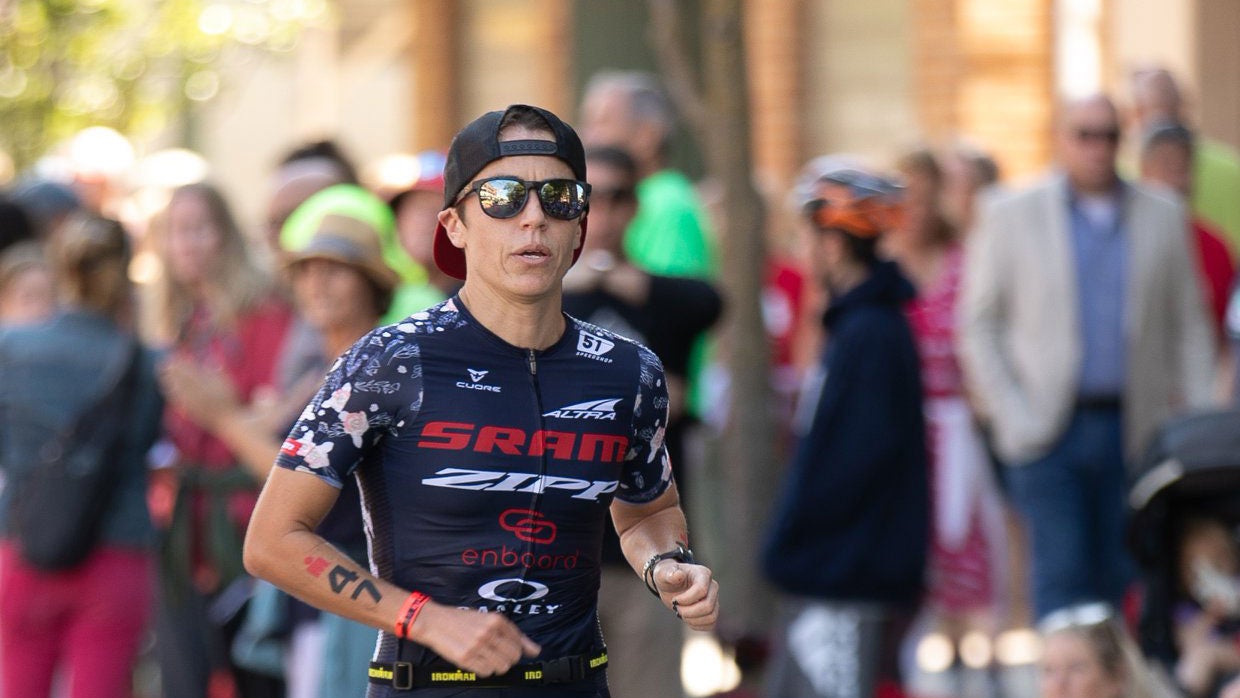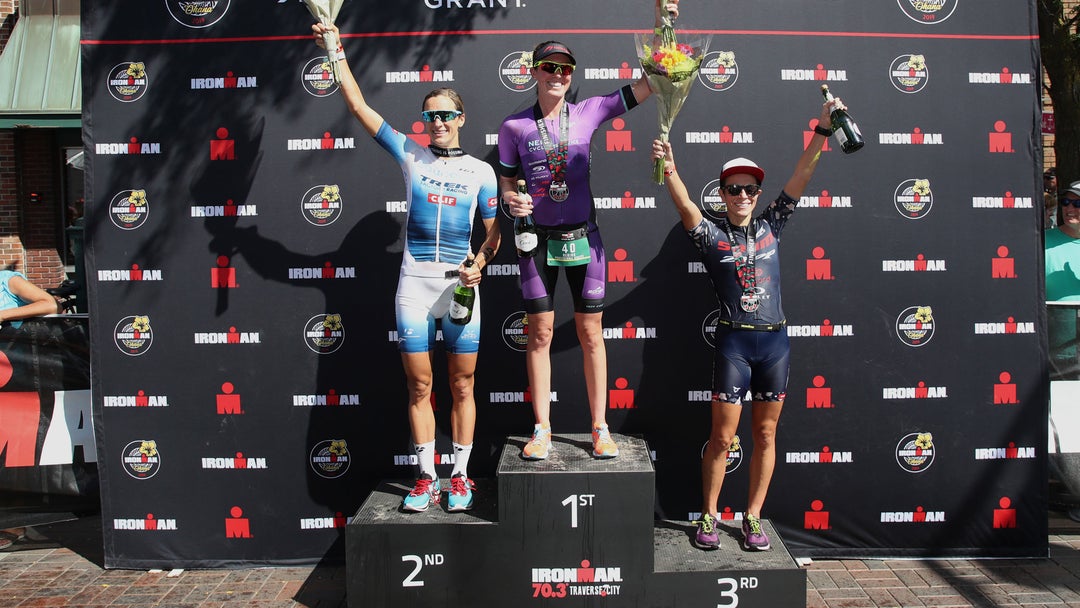Alissa Doehla's Road Back From a Devastating Hit and Run

Photo: Team Stellafly
Alissa Doehla doesn’t remember being run off the rural road and landing hard in a shallow ditch. Or the soft, red, wet clay breaking her fall. Or the pickup truck that hit her peeling away, leaving bits of its bumper behind.
What Doehla does remember is waking up in a hospital five hours later. The searing pain radiating from her left arm, her back, and various other spots in her body. A doctor saying she needed at least six weeks of full rest to heal her myriad injuries, which would ultimately turn into several more. Her confusion of how this happened. Why. And who did it.
On the morning of January 11, 2018, Doehla was at peak fitness, fresh off a stellar rookie season as a pro triathlete. Hours later, she was unconscious, a victim of a hit-and-run on a quiet country road outside of Asheville, North Carolina. That Doehla recovered from the injuries she sustained–a concussion, two fractured vertebrae, a broken ulna, a broken metacarpal, and various ligament strains–is remarkable enough. But what’s even more impressive is the 33-year-old’s ability to forgive, to forget, and to find the strength to race fast once more.
Left Helpless And Alone
It was meant to be a routine ride on a slightly-warmer-than-average winter morning. Doehla had been spending most of her recent weeks cycling indoors on a trainer, and was anxious to get out on the roads. “It was misting a bit, but the visibility was fine,” she recalls. “I bundled up and put extra lights on my bike just in case.”
Turns out, those extra layers and flashing lights may have saved her life. Because about an after leaving the home she shared with her husband, Kyle, a 77-year-old man driving a 1993 Chevy pickup truck rammed her back wheel into a guard rail. The force ripped off parts of the truck’s bumper and Doehla’s bike’s rear fork. She went airborne, still clipped in, hitting the ground traveling at a speed of about 47 miles per hour. The fact that she was wearing a helmet, that she landed on a more forgiving surface–the red clay had been softened by the rain–and that most of her skin was covered by clothes, spared her of worse injuries. Still, the impact knocked her out and rendered her motionless on the side of the road.
The driver of the truck likely never stopped. Doehla was helpless and alone, her body twisted in a heap, her broken bike next to her with its red lights still flashing. The timeframe is fuzzy after that, but at some point, a single car came around the bend. The driver had taken a different route home than usual, and he noticed the flashing lights up ahead. He pulled over, found Doehla, and called 911.
As the driver, and later the paramedics, assessed her, Doehla began coming to. But she couldn’t tell the men her name, her age, or if she was married. “I did somehow remember my husband’s phone number,” she says. “And they say I kept asking over and over again, ‘Is this a dream? Am I dreaming?’”
This was no dream. In fact, for a woman who had only recently decided to pursue a professional career in triathlon, the situation was more of a nightmare. An inability to compete meant potential lost wages, sponsorship opportunities, and exposure on the pro scene. Plus, once Doehla could process the extent of her injuries and make a plan for rest and rehab, she still had to contend with the emotional wounds and trauma of being left, potentially for dead, by a stranger.
“In the hospital, when my husband was explaining to me what happened and said that the guy just left, I couldn’t believe it,” she says. “I don’t know how you can hit a human being and leave them alone like that.”
Few hit-and-run cases are ever solved, but Doehla did catch a break in hers. Local authorities were able to identify the make of the car based on the parts of the bumper found at the scene, and a state trooper living nearby took it upon himself to stake out the road where Doeha was hit. Two days after the accident, he pulled over a 77-year-old man driving a 1993 Chevy pickup truck for not wearing a seatbelt. His bumper was damaged. Turns out, the man lived just one mile from the scene.
Still, the driver’s arrest didn’t offer Doehla the closure she had hoped for. “He never apologized, or showed any remorse,” she says. “My feelings were hurt.” Ultimately, she decided not to pursue any legal action, and all charges against the driver were dropped about a year later. Doehla collected a small insurance settlement, and began to move forward, both mentally and physically.
“I had to,” she says. “It was all such a loss, and so tough. I still had such big goals. Before the accident, I was ready to set the world on fire.”
Active Rest
Locked in a back brace, her arm in a cast, Doehla’s once fitness-driven days suddenly shifted to sedentary. A lifelong athlete–Doehla was an elite runner with a 2:31 marathon PR prior to taking up triathlon–she had been training nonstop since she was 15.
“I tried to tell myself that taking a break is a good thing,” she says. “But it was frustrating, and upsetting. The types of fractures I had take a long time to heal, so there was no way to rush the recovery.”
Determined to find some purpose in her newfound free time, Doehla began painting with watercolors. She took long walks with friends and her dogs, and stayed up late with her husband. She streamlined her social media feeds to avoid the unavoidable comparison to her competitors, who all seemed to be training at full-tilt. Eventually, she and Kyle moved closer to their family in Fort Wayne, Indiana. They baked cookies to bring to her beloved grandmother, who passed away just a few months after their move. She doted on her parents’ litter of six bulldog puppies, one of whom she adopted.
“As bad as the accident was, a few good things came of it,” says Doehla. “I was reminded over and over that my worth as a human being has nothing to do with race results. We tend to get so tied up in our identity as athletes, but above all, I am a wife, a sister, and a friend.”
Finding Her Footing
Of course, Doehla was still a triathlete. And a talented one, with that fire still simmering in her belly. She was able to ride again outside after about two months, and was light jogging another month later. She worked with Fort Wayne-based strength coach Zach Nagell to rebuild her damaged lumbar region and even spent time revisiting old running routes with her high school track coach. Last August, seven months to the day from her accident, Doehla raced Steelhead 70.3, finishing seventh.
But it was no epic comeback. Things weren’t quite right, and perhaps she rushed in too soon. Arthroscopic surgery to repair a damaged plica band–another injury from her accident–soon followed in September, sidelining her again. Once more, Doehla had to start from scratch. She did not return to racing until April of this year, and did so to mediocre results, at least to Doehla’s standards. Her bouts at Texas 70.3 in April and St. George 70.3 in May were, in her words, “demoralizing.”
“There were definitely moments when I doubted myself, when I thought I wasn’t cut out for it,” she says. “The pieces weren’t coming together. And when you’re not hitting marks that you think you’re capable of, it can be devastating.”
With Traverse City 70.3 on her race schedule, Doehla made a concerted effort to shift her perspective. To ditch her expectations. She hired a new coach, David Tilbury-Davis, and hatched a loose plan to podium within a year’s time. “Really, we just said, ‘let’s set the bar at crossing the finish line happy.’”
And on August 25, Doehla did just that. After a solid swim and bike that landed her sixth in the stacked pro field, she leapfrogged onto the podium with a 1:22:54 run split. To Doehla, that third place finish behind Jackie Hering and Linsey Corbin was as much of a victory as if she’d landed on the top step. Because, finally, 19 months after being left in that ditch in rural North Carolina, her body and her mind remembered how to race again.
“I felt rejuvenated, but relaxed because I had nothing to lose,” says Doehla. “There was no pressure, no ‘pass or fail.’
Next, Doehla will tackle Waco 70.3 in October and Indian Wells 70.3 in December. After that? An Ironman may happen soon, but she’s not ready to commit to the distance just yet. Rather, as Doehla finally places the trauma of her past squarely behind her, she’s keeping her future plans super simple. Says Doehla: “I’m just going to keep grinding and see what happens.”
